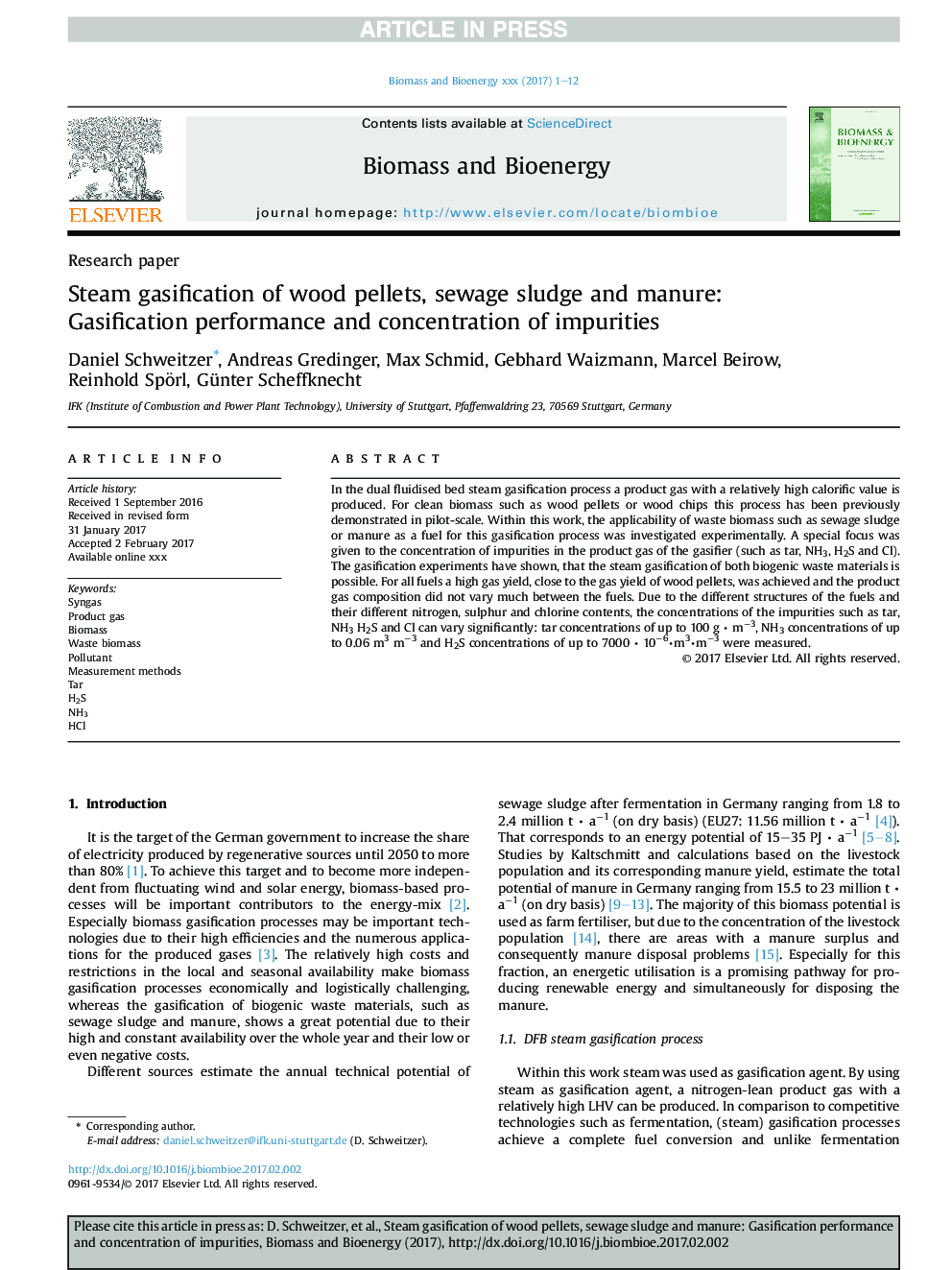| Article ID | Journal | Published Year | Pages | File Type |
|---|---|---|---|---|
| 7062978 | Biomass and Bioenergy | 2018 | 12 Pages |
Abstract
In the dual fluidised bed steam gasification process a product gas with a relatively high calorific value is produced. For clean biomass such as wood pellets or wood chips this process has been previously demonstrated in pilot-scale. Within this work, the applicability of waste biomass such as sewage sludge or manure as a fuel for this gasification process was investigated experimentally. A special focus was given to the concentration of impurities in the product gas of the gasifier (such as tar, NH3, H2S and Cl). The gasification experiments have shown, that the steam gasification of both biogenic waste materials is possible. For all fuels a high gas yield, close to the gas yield of wood pellets, was achieved and the product gas composition did not vary much between the fuels. Due to the different structures of the fuels and their different nitrogen, sulphur and chlorine contents, the concentrations of the impurities such as tar, NH3 H2S and Cl can vary significantly: tar concentrations of up to 100Â g â
 mâ3, NH3 concentrations of up to 0.06 m3 mâ3 and H2S concentrations of up to 7000 â
10â6â
m3â
mâ3 were measured.
Related Topics
Physical Sciences and Engineering
Chemical Engineering
Process Chemistry and Technology
Authors
Daniel Schweitzer, Andreas Gredinger, Max Schmid, Gebhard Waizmann, Marcel Beirow, Reinhold Spörl, Günter Scheffknecht,
